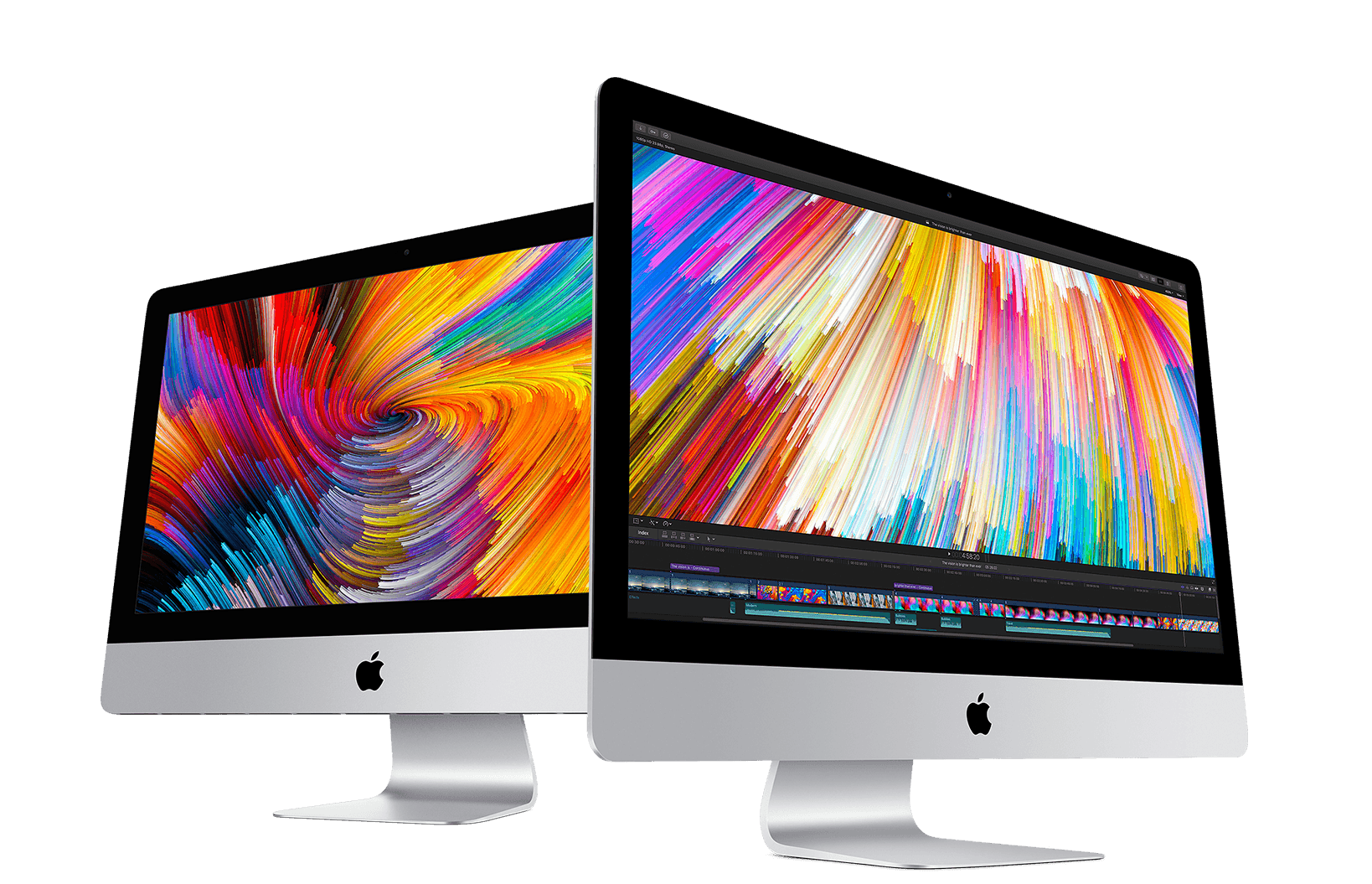Design and Build
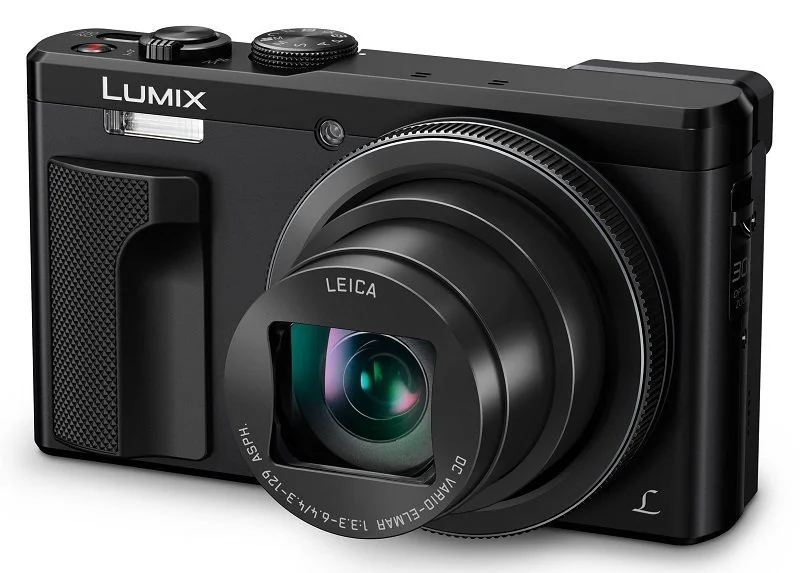
A 30X optical zoom lens in a camera as thin as the Panasonic Lumix ZS60 is a great option.
Although the Lumix ZS60 has a host of impressive features for a fixed lens camera, the best feature is its 30X optical zoom lens in a model that’s relatively small. Panasonic gave the ZS60/TZ80 a strong optical image stabilization feature, meaning that you can hand hold the camera — even when making use of the maximum zoom setting — and still create a sharp photo much of the time without the worry of blur from camera shake.
For those who are new to the world of the best thin super zoom cameras, the types of photos you now can create thanks to the large zoom lens on the Panasonic ZS60 will amaze you. And for those who’ve only used smartphone cameras in the past, which have no optical zoom capability, the 30X zoom lens included here will blow you away.
Related: Check out the Panasonic Lumix LX15 review
Related: Read our Panasonic Lumix ZS70 review
Speaking of the LCD screen, Panasonic gave this model a touch screen LCD, which is an outstanding feature on cameras aimed at beginning photographers. Having a touch screen simplifies the operation of a digital camera, especially for people who are familiar with using a smartphone camera. The display screen quality on the Panasonic TZ80/ZS60 is sharp with more than 1 million pixels of resolution.
If you choose not to use the touch screen on this camera to navigate through the Lumix TZ80/ZS60’s settings, Panasonic provided a large collection of buttons on the back of the camera body to control the settings. The camera also has four function buttons to which you can assign whatever camera function you want, allowing you to personalize the operation of the camera.
Conclusion
A solid update that should be as popular as its predecessors.
While it may seem silly to buy a dedicated point-and-shoot when most people already have a smartphone, a travel zoom is another beast altogether. Though cameras like the ZS60 are a bit pricey, they offer incredible zoom ratios that no smartphone can match. And as good as smartphone cameras have gotten, they still can’t do anything if you’re trying to photograph a subject more than a few feet away.
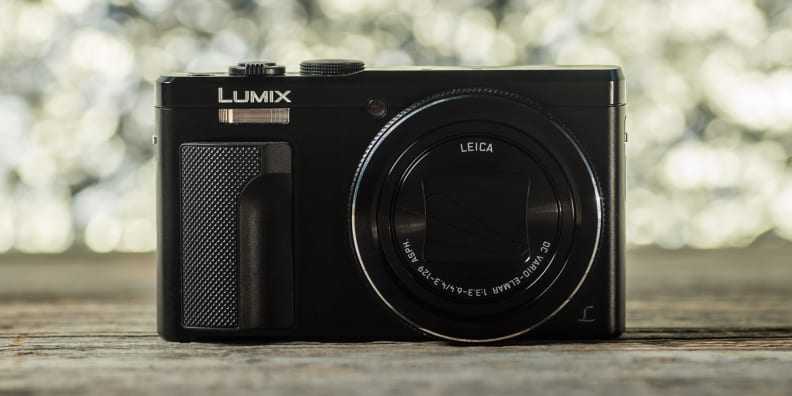 Credit:
Credit:
Reviewed.com / Chris Thomas
Meet the new ZS60, the spit and image of the ZS50.
As far as travel zooms go, the Panasonic ZS60 is certainly among our favorites. While you shouldn’t expect much better image quality than what the best smartphone cameras can deliver, its long zoom, 4K video, touchscreen LCD, and electronic viewfinder all make taking pictures a much easier experience. The compact size is also not much of a burden, especially compared to larger superzoom cameras.
If you want much better image quality and don’t need quite as much zoom, a compact mirrorless camera like the Panasonic GF7 is probably a better option. It costs nearly the same, but it has a sensor that is several times larger than the ZS60’s so it captures better images in all lighting conditions. It only has about 3x zoom with the basic lens, but you can add other lenses to expand your reach and get different shots.
For people who need a good middle ground, the Panasonic FZ1000 is a good alternative as well. It doesn’t have interchangeable lenses, but its high-quality 16x optical zoom lens gives you plenty of range and it captures excellent photos and video. They’re all quite different cameras, but depending on your needs you’re bound to find one that will get the job done.
Sony Alpha A6000 Kit 16-50 Silver
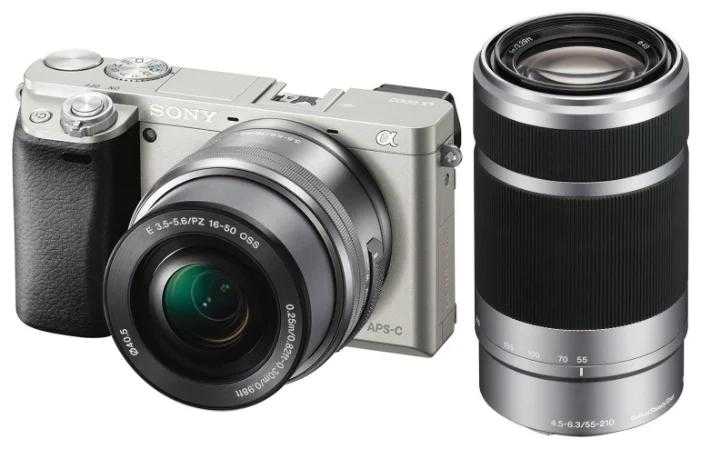
Тип матрицы:
CMOS
Интерфейсы:
Wi-Fi, USB, HDMI, ДУ, HD-видео
Карты памяти:
SDHC, SD, SDXC, Memory Stick
Объектив:
сменный, в комплекте
Кроп-фактор:
1.5
Все характеристики…
Оценка читателей:
4.5/5
Читать отзывы
Беззеркальная модель Alpha 6000 от компании Sony отличается рядом нововведений. Среди них 24-мегапиксельный датчик, а также современная система автофокусировки
Фотоаппарат отвечает стандарту NEX-7.Разработчики уделили внимание не только дизайну, но и «начинке». Используя небольшой объектив Kit, можно носить устройство даже в кармане
Для удобства пользователя предложен наклонный ЖК-дисплей и видоискатель EVF, гарантирующий комфортное кадрирование.
Удобство пользователя обеспечивается простым меню и рядом полезных настроек. Предложено быстрое переключение между автоматической и ручной фокусировкой. Прекрасно проявившая себя система автофокусировки оснащена 179 точками обнаружения. 25 точек контраста Fast Hybrid позволяет охватить до 90% кадра. Фотоаппарат моментально фиксируется на статичных объектах и фиксирует события во время спортивных состязаний. Скорость съемки достигает 11 кадров в секунду, а в динамике фиксируется до 6 снимков.
Преимущества
- высокое качество изображений в данной ценовой категории
- малый уровень шума при повышении чувствительности
- большая скорость съемки и объем буфера
- отличный аккумулятор
- много режимов съемки
- многофункциональный интерфейс
Недостатки
- медленное включение устройства
- стандартный объектив при широком угле может искажать изображение
- не сенсорный дисплей
- при максимальной скорости съемки автофокус не справляется с динамичными кадрами
- длительность видеосъемки небольшая из-за перегрева
Panasonic Lumix GX9 Kit 12-32 Silver (DC-GX9KEE-S)
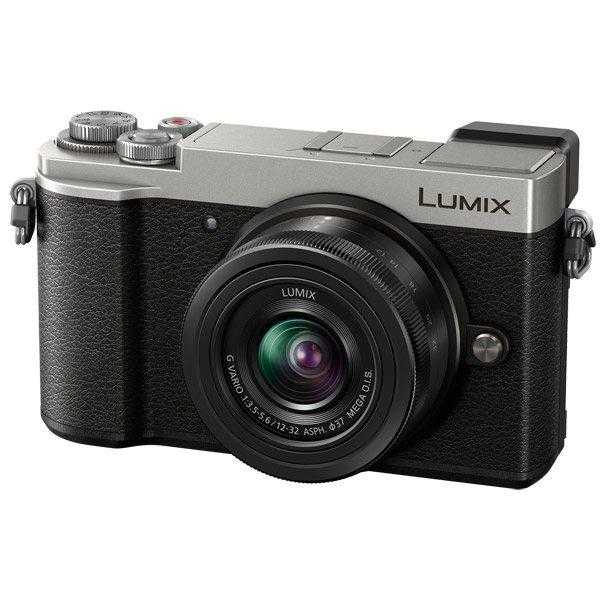
Тип матрицы:
Live MOS
Интерфейсы:
Wi-Fi, USB, HDMI, Bluetooth
Карты памяти:
SDHC, SD, SDXC
Объектив:
сменный, в комплекте
Кроп-фактор:
2
Все характеристики…
Оценка читателей:
5/5
Читать отзывы
Panasonic Lumix DC-GX9 — это компактная камера, которая во всех отношениях особенно подходит для уличных и туристических фотографов. Дизайн красивый и сдержанный Камера поставляется с 20-мегапиксельным сенсором Four Thirds, а его выдающейся особенностью является наклонный электронный видоискатель, который действительно удобен и пможет поставить кадр неопытному пользователю.
GX9 хорошо собран и поставляется с надежным и настраиваемым набором элементов управления. Великолепные цвета в формате JPEG и добавленная настройка L. Monochrome D (высококонтрастный черно-белый режим) будут интересны и полезны для пользователей, которые хотят получать изображения высокого качества без обработки файлов Raw — хотя в GX9 Raw файлы тоже очень хорошие.
Стандартная комплектация позволит построить красивый кадр с нуля, не прилагая больших усилий и не тратя деньги на дополнительные аксессуары.
Design: Basic and handy
The ZS60 style is utilitarian, in a good way. At 4.4 x 2.5 x 1.5 inches and about 10 ounces, it can just squeeze into a front jeans pocket and is an easy fit for anything else. A control ring around the lens barrel provides tactile control of fine adjustments such as manual focus.
A 3-inch capacitive touch screen allows you to tap the exact item you want to set focus on and even tap to shoot. You can also flick to scroll through photos and videos you’ve taken and pinch to zoom. However, the handsome LCD doesn’t tilt as on some other bridge cameras like the . This makes some photos harder to frame and requires holding the camera awkwardly in front of your face when shooting video.
When sunlight overwhelms the rear screen, the 0.2-inch LCD electronic viewfinder allows you to preview and review your photos. It’s a bit small, and can be choppy when you are panning, but the EVF is still a nice bonus feature.
Video: Useable 4K
While on a par with smartphones, the quality of ZS60’s 4K video is below that of higher-end bridge cameras such as Panasonic’s own LX100. In particular, video sometimes experiences a lot of rolling-shutter, a wobbly, Jell-O-like effect when dealing with motion. You can see the effects in the right half of this video when the camera, which is handheld, jitters even a bit.
Video gets soft in low light, and the ZS60 is plagued by a skittish autofocus that drifts in and out on static objects. However, in fairness, you’re unlikely to shoot such low-movement scenes in real life.
Quality is at least on par with a smartphone, though, based on these back-to-back clips from the ZS60 (first) then the .
Автофокус (фото)
Если вы
бежите к камере или идёте к ней, то с автофокусом по лицу и глазам будет почти на 100% серия будет всегда в фокусе. Если условия схожие с нашими, но вот профиль головы для
S5 – какая-то недосягаемая планка. Она ну очень долго понимает, что нужно
наводить фокус на голову в профиле, хотя рамка индикации голову фиксирует почти
моментально. Эта та ахиллесова пята, о
которой стоит знать, впрочем, это, надеюсь, смогут поправить последующими
обновлениями прошивки.
Точечный
фокус чёткий как при достаточном освещении, так при слабом или почти в потёмках.
Но чем темнее, тем сильнее наблюдается его замедление. Однако по итогу объект все
равно будет в фокусе.
Panasonic Lumix DMC-TZ80 review – Performance
A few days after Storm Imogen and the north Cornwall coast basks in sunlight once again. Set to ISO 80 and captured with the iAuto exposure mode, the TZ80 has produced a pleasing image. 24mm, 1/500sec, at f/3.3, ISO 80
Focusing is taken care of via Panasonic’s Light Speed AF and Depth from Defocus (DFD) technologies, with a claimed focus acquisition time of just 0.1sec. In good light, the focus-lock ‘beep’ sounds the instant the shutter button is pressed halfway, but when light levels drop, the TZ80’s AF performance does become noticeably slower. In this case the built-in AF Assist light becomes essential.
The new Venus Engine image processor makes fairly light work of processing full-resolution JPEGs. With a SanDisk Extreme Pro SDHC Class 10 UHS-1 card, shooting full-resolution JPEG or raw images in single-shot drive mode, there was no apparent upper limit on the number of consecutive images the TZ80 could record. Switching to 10fps mode, we were able to record approximately 50 consecutive full-resolution JPEGs before experiencing any slowdown. In raw this dropped to 14 consecutive frames, while in raw+JPEG fine the camera began to slow after 12 consecutive frames.
The TZ80 has done a good job in this image of the sun reflecting off a row of white houses that overlook Bocastle Harbour, Cornwall. 27mm, 1/800sec at f/6.3, ISO 100
Overall, we’d have to say that processing speeds of the TZ80 are pretty impressive, and most users are unlikely to experience any issues in day-to-day use. Meanwhile, the zoom travelled through its full range in a fraction under 3secs. Using the control wheel around the base of the lens to zoom slows things down considerably, but it feels much more precise.
Beyond Standard Zoom
The Panasonic Lumix S 20-60mm F3.5-5.6 sets itself apart from most full-frame standard zoom lenses by virtue of its wide-angle coverage—at 20mm, it captures a broader view than a zoom that starts at 24mm or 28mm.
Lumix DC-S5, 20mm, f/3.5, 1/1,600-second, ISO 100 (Jim Fisher)
It makes the expected trade-offs to come in at a reasonable size and price. The aperture is a narrow, variable design, typical of starter zooms, and relies on in-body stabilization, a feature included in most, but not all, L-mount cameras.
The aperture is the big downside when compared with more expensive lenses—the f/3.5-5.6 range is fine for use outdoors and in decently lit interiors, but it doesn’t match the light-gathering or depth of field control of an f/2.8 zoom. L-mount owners can look to the Sigma 24-70mm F2.8 DG DN Art, but it’s close to twice the price.
(Jim Fisher)
Still, Panasonic didn’t cut corners with construction quality. The S 20-60mm doesn’t bear the S Pro designation of some higher-end options, but it’s well built, with dust, splash, and fluorine protection. It’s also usable in very cold temperatures, matching the capabilities of the S1 and S1R cameras.
The lens is a strong value at its full $600 asking price, good enough to earn our Editors’ Choice award. It’s an even better value if you get it along with an L-mount camera—it can be had for $300 when bought along with the Lumix DC-S5.
Panasonic Lumix S 20-60mm F3.5-5.6
4.0
Editors’ Choice
(Opens in a new window)
See It
$497.99 at Amazon
(Opens in a new window)
MSRP $599.99
Pros
- 20mm wide-angle coverage
- Excellent optics
- No visible focus breathing
- Dust, splash, and fluorine protection
- Light and compact
- Works with Leica, Panasonic, and Sigma cameras
View More
Cons
- Edges aren’t that sharp at 20mm
- Omits optical stabilization
The Bottom Line
The Panasonic Lumix S 20-60mm F3.5-5.6’s wider-than-normal coverage, coupled with quality construction, makes it the best starter lens for any full-frame camera system.
Like What You’re Reading?
Sign up for Lab Report to get the latest reviews and top product advice delivered right to your inbox.
This newsletter may contain advertising, deals, or affiliate links. Subscribing to a newsletter indicates your consent to our Terms of Use and Privacy Policy. You may unsubscribe from the newsletters at any time.
Thanks for signing up!
Your subscription has been confirmed. Keep an eye on your inbox!
Sign up for other newsletters
Video
Video is hit or miss with the ZS60. While it offers 4K video, it’s really something better suited to downsample into HD if you can—sharpness of 4K video on such a small sensor is comparatively poor to other cameras that offer the feature.
Able to resolve 1100 line pairs per picture height vertically and 1250 lp/ph horizontally, sharpness is average, but not great for a 4K shooting camera. I say that because there are some continuous autofocus issues that tend to make the camera hunt in less-than-ideal lighting, and it can be tough to nail the shot you want.
Motion is decent—you can expect smooth video and very little frequency interference. Unless you absolutely need 4K, I’d recommend using the 1080p/60p video capture setting. Not only is it easier on your SD card, but you’ll get better-looking video as a result.
Meet the tester
Chris Thomas
Staff Writer, Imaging
@cthomas8888
A seasoned writer and professional photographer, Chris reviews cameras, headphones, smartphones, laptops, and lenses. Educated in Political Science and Linguistics, Chris can often be found building a robot army, snowboarding, or getting ink.
See all of Chris Thomas’s reviews
Какая беззеркальная камера для начинающих подойдёт вам?
| Если вам нужно | Выбирайте эту камеру |
|---|---|
| Лучший выбор объективов | Fujifilm X-T30 II |
| Лучший автофокус | Canon EOS R10 |
| Лучшая съёмка видео | Sony ZV-E10 |
| Полнокадровая камера | Nikon Z5 |
| Камера в классическом стиле | Nikon Z fc |
| Небольшая доступная камера | Panasonic Lumix GX9 |
Быть может, вам нужна камера с поддержкой формата 4K, но он есть не у всех. Это разрешение встречается всё чаще, но пока остаётся новой областью для беззеркальных камер начального уровня. Зато все такие камеры поддерживают 1920 х 1080 (Full HD).
Ознакомьтесь с характеристиками задних экранов. Размер и разрешение не слишком важны, потому что сейчас все они почти одинаковые. Благодаря сенсорному дисплею камера больше похожа на смартфон, что упрощает работу с ней тем, кто привык к съёмке на мобильное устройство.
Все представленные в этой статье беззеркальные камеры хорошо подходят для начинающих благодаря цене, размеру, простоте использования, функциональности.
На что обратить внимание перед покупкой видеокамеры 4K
Если вы зашли так далеко и все еще не уверены, какую видеокамеру 4K купить, вот некоторые особенности, которые следует учитывать.
Максимальное разрешение
Максимальное разрешение этих камер, по сути, 4К. Однако некоторые видеокамеры записывают в этом качестве со скоростью 25 кадров в секунду и требуют для этого режимов записи 60 кадров в секунду. Для этого они также могут создавать фильмы в формате Full HD, поддерживая плавную и стабильную частоту кадров.
Процессор
Графический процессор видеокамер 4K используется для обработки изображений в реальном времени, поддержания определенной стабильности частоты кадров, правильной яркости и экспозиции света и многого другого. Следовательно, это важная характеристика.
Линзы
Объектив видеокамеры 4K может быть разного типа, например, телескопическим или широкоугольным. Самая важная часть в понимании того, как выбрать между лучшей и худшей видеокамерой, — это качество объектива, его светосила и наличие хорошего оптического зума.
Тип датчика и размер
Сенсор служит для обеспечения правильной экспозиции света, для создания изображений, которые не будут ни слишком яркими, ни слишком темными. Хороший сенсор позволит вам снимать идеальные видеоролики на вашу видеокамеру 4K в любых погодных условиях и при любом освещении.
Чувствительность к свету
Чувствительность к свету связана именно с речью сенсора, потому что зависит от этой фантастической составляющей. Чтобы всегда иметь качественные кадры 4K, важно, чтобы камера не была слишком чувствительна к свету
Форматы видео
Форматы видео определяют тип файла, в котором сохраняются кадры вашей камеры в формате 4K. Некоторые форматы, например .mov, имеют лучшее качество. Большинство хороших видеокамер сохраняют видео в форматах .mp4, .avi или даже .mkv, что является форматом с наилучшим качеством.
Стабильность изображения на высокой скорости
Стабильность изображения может быть нарушена, если вы записываете видео в движении, например, на велосипеде или в машине. Для этого важно, чтобы процессор вашей видеокамеры 4K мог автоматически стабилизировать отснятый материал.
Режим подключения
Что касается подключения, то это касается возможности подключения вашей видеокамеры 4K к смартфону или к телевизору. Для ТВ некоторые видеокамеры имеют порт HDMI для удобного просмотра фильмов на экране.Вместо этого большинство видеокамер 4K имеют соединение Wi-Fi для беспроводного подключения устройства к вашему смартфону.
Low Light Performance and Movie Mode
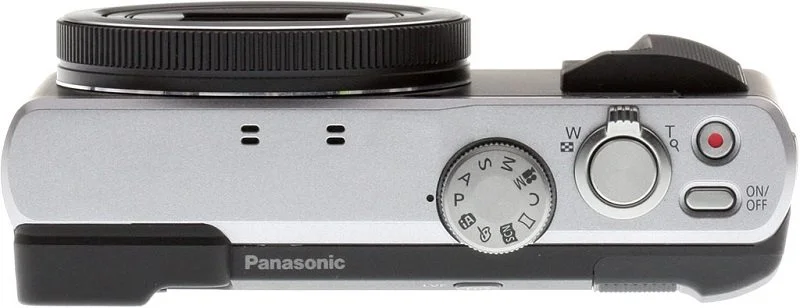
The Lumix ZS60 (known as the Lumix TZ80 in some parts of the world) is one of the few compact cameras in the market with the ability to create 4K video resolution.
As this Panasonic Lumix DMC-ZS60 review shows, it’s great to find 4K video resolution with this model. While digital camera makers are starting to include 4K video resolution alongside full HD video, it’s still not a common feature, especially in a fixed lens camera. It also has 4k photo modes, 4k post focus, and a max shutter speed of 1/2000 sec.
One problem that this model has that affects both its 4K video and its low light photography performance is the introduction of noise in its images. Because the image sensor is small in physical size, it has some problems with incorrectly recorded pixels (noise). The image sensor’s noise problems are part of the reason Panasonic limited the Lumix ZS60 to a maximum ISO setting of 3200, because higher ISO settings would create unusable photos as a result of noise.
Rather than increasing the ISO, you likely will want to use the embedded flash when faced with low light situations. Just be certain that your fingers on your right hand aren’t blocking the flash, as Panasonic’s design team oddly chose to place the flash in the upper left corner of the front of the camera (when viewed from the front), which is where many people naturally have their right-hand fingers while holding a digital camera. Most small cameras have an embedded flash in the upper left corner.
Новый LUMIX DMC-TZ60 — самый тонкий в мире* цифровой компактный фотоаппарат с видоискателем Live View и 30x зумом!
*Информация верна для цифровых камер с 30× оптическим зумом на 6 января 2014 года.
Компания Panasonic представляет новый флагман в популярной серии TZ — самый тонкий в мире цифровой компактный фотоаппарат с видоискателем Live View и 30× оптическим зумом (24—720 мм в эквиваленте 35 мм камеры). Камера оснащена Wi-Fi, NFC, GPS, разнообразными ручными настройками и поддержкой Full HD-видеосъемки.
Фотокамеры серии LUMIX TZ заслужили признание пользователей со всего света, поскольку их универсальный объектив позволяет снимать как пейзажи, так и портреты. Главным отличием DMC-TZ60 стало значительное улучшение функций, предназначенных для опытных фотографов, например, кольцо управления на объективе, поддержка RAW и система помощи при фокусировке.
Благодаря огромному опыту в оптических технологиях, компании Panasonic удалось интегрировать широкоугольный объектив с 30× зумом в невероятно компактный корпус, а система оптической стабилизации изображения HYBRID O.I.S.+ эффективно подавляет эффект дрожания рук при фото- и видеосъемке.
MOS-сенсор с разрешением 18,1 Мп и процессор изображения Venus Engine обеспечивают высокую светочувствительность и превосходную скорость съемки, что позволило реализовать Full HD-видеосъемку в разрешении 1920×1080 50p, а также высокосортную серийную съемку со скоростью 10 кадров/сек в высоком разрешении. При этом камера отличается минимальным временем запуска и быстрой системой автофокусировки Light Speed, так что вы не упустить уникальный кадр.
Благодаря поддержке Wi-Fi и NFC, вы сможете подключать камеру к своему смартфону одним прикосновением — больше вам не придется пользоваться кабелями или искать точку доступа. Или же вы можете просто считать QR-код. Также, смартфон/планшет можно использовать в качестве дополнительного монитора для камеры, при этом вы сможете управлять фокусировкой, зумом или кнопкой спуска. Но главное, теперь возможно сразу после съемки передать сделанные фотографии на выбранное устройство.
Новинка оснащена встроенными модулями GPS и GLONASS, что позволило добиться еще более высокой точности определения местоположения. При этом предусмотрена база данных с информацией о миллионах достопримечательностей, а также компас — эти функции по достоинству оценят любители путешествовать.
К тому же были добавлены специальные режимы, которые позволяют получать больше удовольствия от съемки: Творческий контроль, Творческая ретушь и Творческая панорама. Также доступен режим макросъемки, позволяющий снимать объекты, расположенные в пределах 3 см от объектива.
При помощи функции Воспроизведение на телевизоре, вы можете посредством Wi-Fi выводить изображение на большой экран, поддерживающий функцию Digital Media Renderer (DMR) стандарта DLNA.
Благодаря сочетанию невероятного количества функций, компактных размеров и объектива с 30× зумом, DMC-TZ60 станет удачным решением как для начинающих, так и для опытных фотографов.
Другие функции
Электронный уровень, Помощник построения композиции, режим iA (Интелелктуальный автоматический), HDR (Расширенный динамический диапазон), 3D фото, ЖК-монитор с диагональю 3″, разрешением 920 000 точек и антибликовым покрытием, аккумулятор ёмкостью 1250 мА/ч, зарядка по USB
Доступность и цена
Виджет от FS
Предыдущая новостьСледующая новостьВернуться к списку новостейОставить комментарий
Лучшая беззеркальная камера для новичков: Canon EOS R10
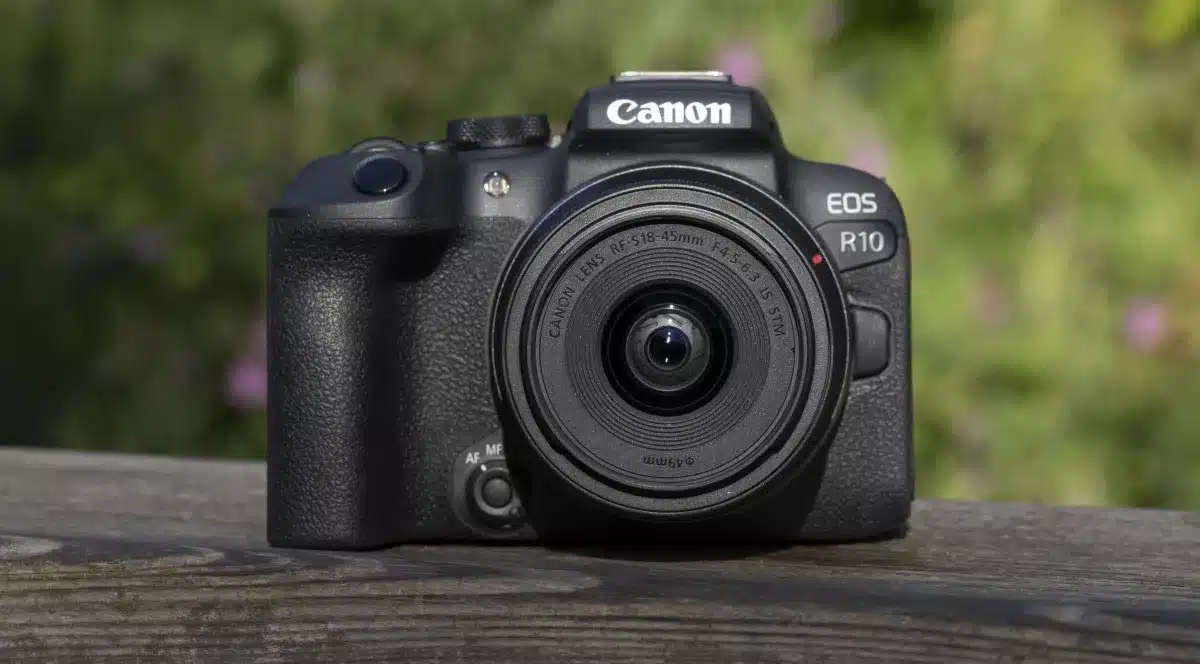
Canon EOS R10 предлагает превосходное сочетание доступности и качества, благодаря чему и считается великолепным предложением начального уровня. Получив её, фотографы-новички смогут учиться и улучшать свои навыки. Компактная камера удобно лежит в руке, обладая двойным диском управления и специальным джойстиком автофокусировки. Поворотный сенсорный экран позволит снимать так, как привычно обладателям смартфонов.
Сенсор с разрешением 24,2 Мп не самый продвинутый, зато современные возможности автофокусировки и мощный процессор Canon Digic X дают возможность профессионального роста фотографа. В тестах отслеживание автофокуса было интуитивно понятным и весьма надёжным для камеры этой категории. Скорость серийной съёмки 15 кадров/с тоже неплохая, позволяя снимать в движении.
Возможности съёмки после наступления темноты ограниченные из-за отсутствия встроенной стабилизации изображения. В остальном EOS R10 хорошо смотрится на фоне конкурентов APS-C, создавая чёткие, детализированные фотографии с приятными цветами. Умение снимать видео придаёт камере определённую универсальность. Несмотря на отсутствие плоского цветового профиля, можно записывать необрезанные кадры 4K/30p методом передискретизации из разрешения сенсора 6K. Не хватает разве что широкого выбора объективов этого производителя, так что остаётся лишь надеяться на изменение ситуации к лучшему.
Характеристики:
- Размер сенсора: APS-C CMOS**.
- Разрешение: 24,2 Мп.
- Видоискатель: электронный видоискатель OLED, 2,36 млн точек.
- Дисплей: 2,95-дюймовый поворотный сенсорный экран, 1,04 млн точек.
- Максимальная скорость непрерывной съёмки: 15 кадров/с.
- Видео: 4К.
- Уровень пользователя: начинающий.
Плюсы:
- Компактная и лёгкая.
- Современные возможности автофокуса.
Может не понравиться:
- Нет встроенной стабилизации изображения.
- Обрезает видео 4K/60p.
Image quality compared
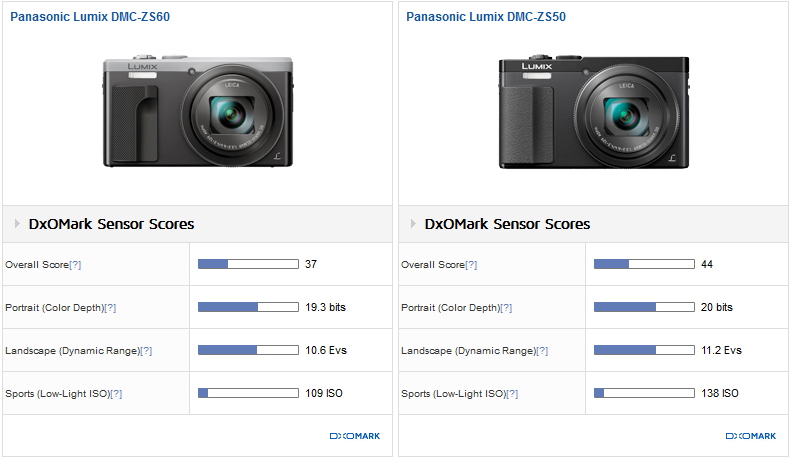
Travel enthusiasts looking to capture more detailed scenes will welcome the increase in resolution over its predecessor, the 12.1Mp Lumix ZS50. The extra pixels on the same-sized sensor has had a slightly detrimental effect on overall image quality, however, with the ZS60 achieving slightly lower scores for all sensor metrics. It’s certainly not a huge difference, particularly considering that resolution has increased by a massive 50%; and despite slightly better results at base ISO on the ZS50, we can essentially say they offer the same overall image quality, with the best results achieved at the lower ISO sensitivities.
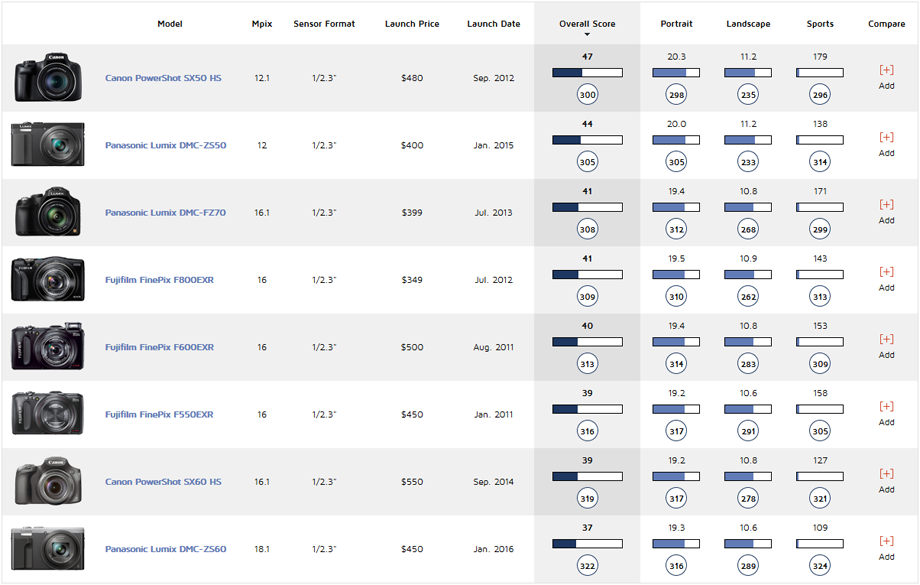
Image Quality
The Lumix ZS60’s image quality is a little bit of a disappointment for a camera in this price range, as it includes only a 1/2.3-inch image sensor, the smallest type of physical sensor available in a digital camera. This model contains 18.1 megapixels of resolution, which is another upgrade over the ZS60’s predecessors.
This is one area where the Lumix ZS60 versus a Lumix TZ100 shows that the more expensive TZ100 (also called the ZS100) has a significant advantage, featuring a 1-inch image sensor with 20.1 megapixels of resolution.
Panasonic provided the ability to shoot photos in RAW with the Lumix ZS60, which is an extremely rare feature among cameras that have 1/2.3-inch image sensors. The sensor is also paired with a Venus Engine image processor. RAW image format photos are recorded without any compression applied to the photo file, as occurs with JPEG image format photos to save recording space on the memory card. Avoiding using compression gives the RAW files better image quality than JPEG files, although the difference between the two image formats isn’t quite as noticeable with the ZS60’s small image sensor as it is when you’re working with a camera with a much larger image sensor.
Overview
Summary: The Lumix ZS60 is an easy to use camera that also offers plenty of advanced features, including a 30X optical zoom lens, 4K video recording, a touch screen display, and a viewfinder.
WHY IT’S A TOP PICK: Tremendous zoom capability and desirable viewfinder in a pocket sized camera.
Price: $449 from AmazonAvailable: January 2016Model: ZS60/TZ80
What We Liked
- 30X optical zoom lens great to find in relatively thin camera
- Option of using viewfinder or touch screen LCD to frame photos
- 4K and HD video resolution available
- Camera is very easy to use
- Battery life is above average
What We Didn’t
- Low light images are no better than average
- ISO setting limited to maximum of 3200
- Embedded flash unit is in odd location
- No option for adding external flash unit
- Small 1/2.3-inch image sensor leaves ZS60’s image quality lagging behind others in its price range
Automatic Features of the Panasonic Lumix DMC-60
Sometimes, you simply do not want to mess with all the settings because you don’t want to miss a shot. While visiting the Colorado Railroad Museum, I handed off the Panasonic camera to my two grandkids, and these are the (unedited) photos they snapped using the iA setting. It’s simple! Set Your Dial to iA – Intelligent Auto Mode. When pointed at the subject, the camera automatically reads the scene and adjusts automatically to the optimum settings. Press halfway (lightly) to focus and press full to take the picture. This is the simplest way to take almost any picture, and the grandkids agreed that this is a kid friendly camera.

Как выбрать лучшую беззеркальную камеру для начала
Не всегда дешёвый продукт имеет хорошее соотношение цены и возможностей. Если этот продукт перестанет удовлетворять вашим запросам, придётся покупать другой и в итоге расходы могут стать слишком высокими. Некоторые из описанных ниже камер могут показаться дорогими тем, кто прежде не владел фотоаппаратами, но зато они смогут прослужить много лет.
Если относиться к хобби как к инвестиции, оно может принести дивиденды, если сделать инвестицию правильно. Недорогие фотоаппараты могут хорошо справляться с поставленными перед ними задачами, но уменьшение стоимости ведёт к отсутствию функций и элементов управления. Нужно понимать, не потеряете ли вы в попытке сэкономить то, что может вам понадобиться.
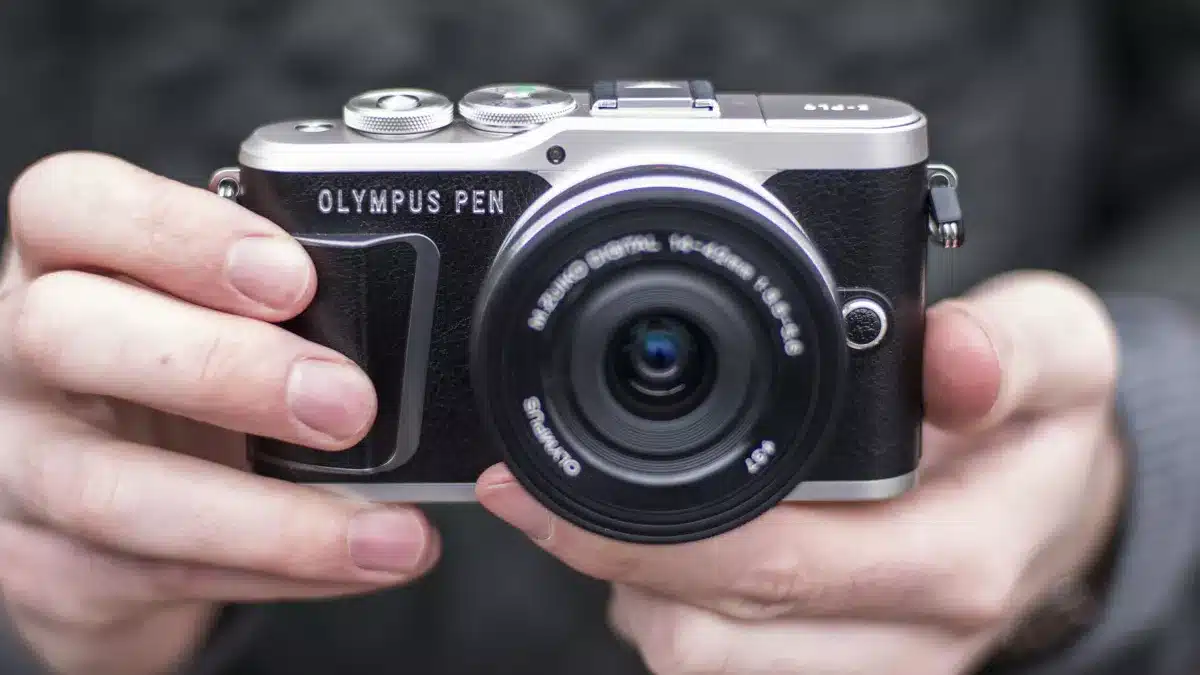
Например, самые дешёвые беззеркальные фотоаппараты обычно лишены видоискателей. Между тем, они могут быть незаменимы во время съёмки при ярком освещении, когда на задней панели могут быть блики и отражения. Всегда рекомендуется камера с видоискателем, если есть такая возможность.
Беззеркальные камеры обычно поставляются либо с сенсором APS-C, либо с чуть меньшим Micro Four Thirds. Оба сделали значительный шаг вперёд по разрешению и качеству изображения по сравнению с небольшими сенсорами смартфонов или компактных камер. Их больший размер означает, что они имеют отличную производительность при слабом освещении.
Важность других функций будет зависеть от стиля съёмки. Видеоблогеры оценят превосходные качества видео нескольких описанных ниже камер
Встроенная стабилизация изображения пригодится тем, кто будет снимать с рук.
In the Lab
I tested the Lumix S 20-60mm with the 24MP Panasonic S5 and software from Imatest(Opens in a new window). The combination nets sharp images for the most part, though I should note that these tests are on a 24MP camera, and results may not match what you get with a high-resolution body, like the 47MP Panasonic S1R and Leica SL2.
At 20mm f/3.5, the pair delivers images with excellent center resolution, but some off-center softness. The average puts it in our good performance range (2,050 lines), but it does tick up as the aperture is set to narrower f-stops. We see about 2,300 lines, a very good result, from f/5.6 through f/16, and edges pick up at f/8 and f/11, the best settings for landscape shots. You can set the aperture to f/22—it cuts into resolution, but nets better-looking sunstars.
Lumix DC-S5, 20mm, f/22, 1/60-second, ISO 320 (Jim Fisher)
At the midpoint of the zoom, 40mm, the maximum aperture dips to f/4.8, but resolution improves, falling just outside of our excellent range (2,400 lines), and is a bit better (2,600 lines) at f/5.6 through f/11. Edge clarity isn’t a concern—at this focal length, edges are nearly as sharp as the center.
The story is the same at 60mm. The zoom resolves very good detail at f/5.6, and enters excellent territory at f/8 and f/11 (2,600 lines). Image quality holds up at f/16, and is decent, but a definite step back, at f/22 (2,080 lines).
Lumix DC-S5, 20mm, f/3.5, 1/200-second, ISO 100 (Jim Fisher)
The lens exhibits no visible distortion when working in JPG mode, but does show some when you work in Raw format. At 20mm, there’s heavy, complex mustache distortion, giving way to a modest pincushion effect at 40mm and 60mm. Adobe Lightroom includes profile corrections to compensate for the effect, so you’ll never notice it.
User-Friendly Camera – Even Grandma Can Learn!
For years, I lugged around a Nikon DSLR with extra lens, breaking up with it completely when introduced to the Panasonic DMC-ZS40. I was stoked to try out the new and improved. It’s so easy that even Grandma can use it!
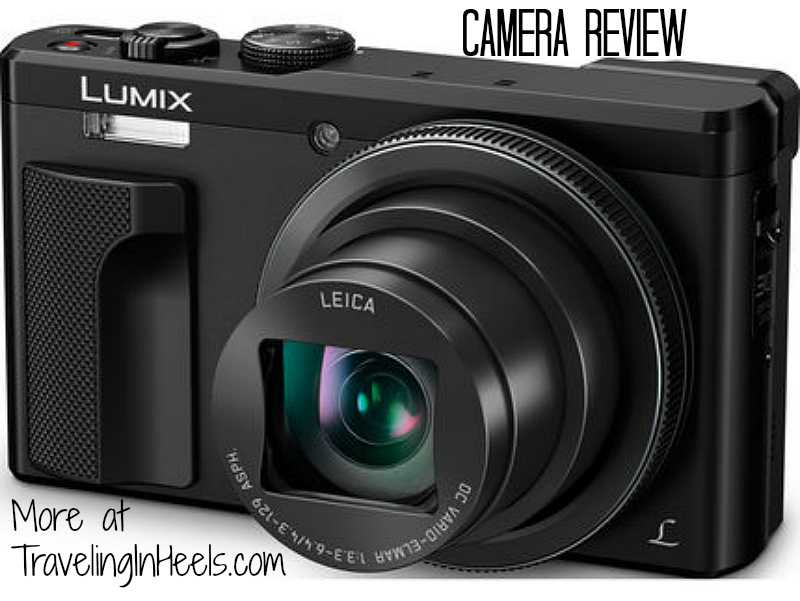
User-Friendly Camera Panasonic Lumix DMC-ZS60
Okay, perhaps I’m a little more camera techy than many grandparents, but the DMC-ZS60 was so similar to my ZS40 that the learning curve was small. I couldn’t help but compare it to my previous ZS40 model, and in this case, spending a couple of years shooting pictures with that camera brought me up to speed much more quickly on this newer version.
I picked up the fully charged camera, turned it on and was able to quickly run through the possible built-in features on the camera.
